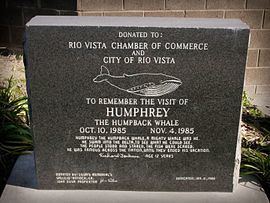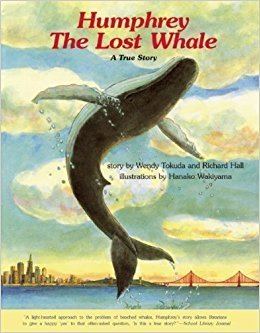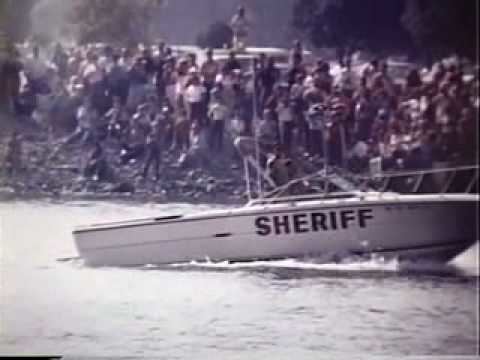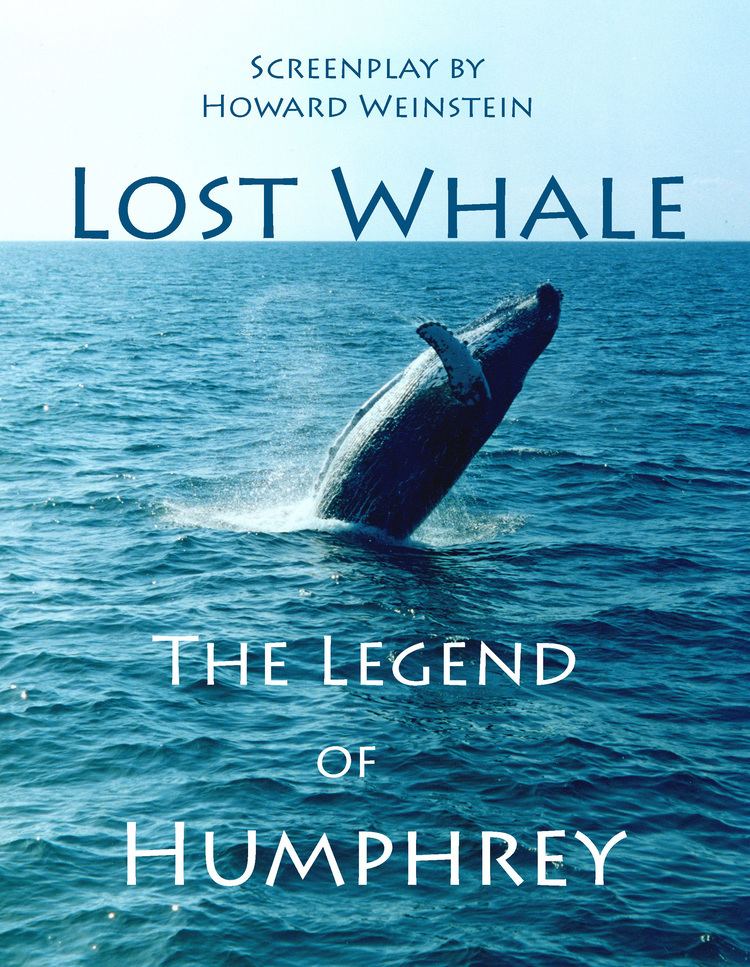 | ||
Species Megaptera novaenganliae Known for entering San Francisco Bay during annual migration in 1985 and 1990 | ||
humphrey the whale news reports part 1 of 2
Humphrey the Whale is a humpback whale which twice deviated from his Mexico to Alaska migration by entering San Francisco Bay. This behavior is unusual for a humpback whale, and Humphrey attracted wide media attention when entering the bay in both 1985 and 1990. Both of his bay incursions resulted in rescue by the Marine Mammal Center, based in Marin County, California, assisted by the United States Coast Guard and hundreds of other volunteers.
Contents
- humphrey the whale news reports part 1 of 2
- Kate meets humphrey the whale 20140604
- Description
- 1985
- 1990
- Later sightings
- In media
- References

The last sighting of Humphrey was in the vicinity of the Farallon Islands in 1991.
Kate meets humphrey the whale 20140604
Description

The humpback whale is a mammal which belongs to the baleen whale suborder. An adult usually ranges between 12–16 m (39–52 ft) long and weighs approximately 36,000 kilograms (79,000 pounds), or 36 tonnes (40 short tons). It is well known for its breaching, its unusually long front fins, and its complex whale song. The humpback whale lives in oceans and seas around the world.

Humpback whales have a stocky body with well defined humps and black upper elements. The head and lower jaw are covered with knobs called tubercles, which are actually hair follicles and are characteristic of the species. The tail flukes, which are lifted high in the dive sequence, have wavy rear edges.
Individual humpbacks have unique patterns on their long black and white tail fin and pectoral fins which allow scientists to positively identify them.
1985

In 1985, a 40 feet (12 m) long humpback entered San Francisco Bay and was followed closely on the evening news by Bay Area television stations. After a few days in the bay, the whale, nicknamed Humphrey, swam up the Sacramento River into a freshwater habitat. The whale, first spotted at Oakland's Outer Harbor October 10, 1985, swam up the Carquinez Strait, the Sacramento River and under the Rio Vista Bridge to a dead-end slough 69 miles (111 km) from the ocean.

Numerous attempts to coax him back to the ocean failed. One initial attempt involved playing sounds of orcas to frighten Humphrey into leaving. Another attempt was made using a "sound net" in which people in a flotilla of boats made unpleasant noises behind the whale by banging on steel pipes, a Japanese fishing technique known as "oikomi." Several weeks of being trapped in the fresh water of the Sacramento Delta brought signs of physical stress in the whale. His skin was graying and he was becoming more and more listless. None of the traditional herding techniques were working, and Humphrey appeared to be dying.
As a last-ditch effort to save the whale, Louis Herman, a researcher of humpback whales, postulated that it would be possible to lure it out by playing acoustic recordings of whale social and feeding sounds. Dr. Bernie Krause, an acoustician, offered the recordings he had made of humpback whale feeding songs as a possible way to lure him out. However, to get the sounds into the water required a powerful speaker and amplification system that only the Navy was likely to have. Krause contacted Greg Pless who was in charge of the underwater acoustics research laboratory for the Naval Postgraduate School in Monterey, California, where one of the few high-power J-11 underwater transducers existed in the country. Pless and his colleague Dale Galarowicz quickly gained Navy permission and rushed the equipment to Rio Vista where Humphrey was last seen.
Early the next morning, the equipment was loaded onto the private yacht, Boot Legger, donated by its owner for the rescue effort. Directed to the location in the slough where Humphrey was last seen, the speaker was lowered over the side of the boat, the sounds were played, and Humphrey emerged from the water at the bow of the ship. The captain quickly started down the river with Humphrey close in tow. With the assistance of numerous fish and wildlife agencies, including the Army's 481'st Transportation Company (Heavy Boat), the crew led him the many miles back down the Sacramento river, alternately playing and not playing the whale songs to keep his interest. Large numbers of spectators lined the banks of the river.
As they approached the San Francisco Bay and the water gained in salinity, Humphrey became visibly excited and began sounding. Though the crew lost sight of him that night, they picked him back up in the morning and led him out through the Golden Gate bridge into the Pacific Ocean on November 4, 1985, at 4:36 p.m. The town of Rio Vista later erected a granite marker at the harbor commemorating the event.
1990
Humphrey stayed a considerable time in 1990 in the embayment immediately north of Sierra Point in Brisbane, California where occupants of the Dakin Building could observe his antics. Humphrey became beached on a mudflat in San Francisco Bay to the north of Sierra Point and to the south of Candlestick Park. He was extricated from the mudflat with a large cargo net and support from the Marine Mammal Center and a U.S. Coast Guard boat.
This time, he was successfully guided back to the Pacific Ocean using a combination of "oikomi" simultaneously with the broadcast of attractive sounds of humpback whales preparing to feed from a boat headed towards the open ocean. Researchers Louis Herman and Bernie Krause led a team of scientists who used sound recordings of natural whale feeding vocalizations to guide Humphrey back to safety. These sounds were produced for a swimming trajectory of 50 miles (80 km) until Humphrey reached the Pacific Ocean, sometimes attaining speeds of 30 miles per hour (48 km/h).
Later sightings
Cascadia Research Collective spotted Humphrey in 1986, 1987 and 1988 outside the Bay.
Humphrey has been seen only once since the second misadventure, at the Farallon Islands in 1991.
